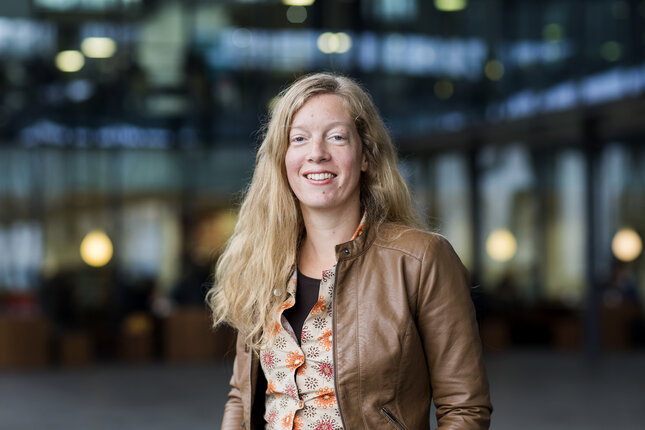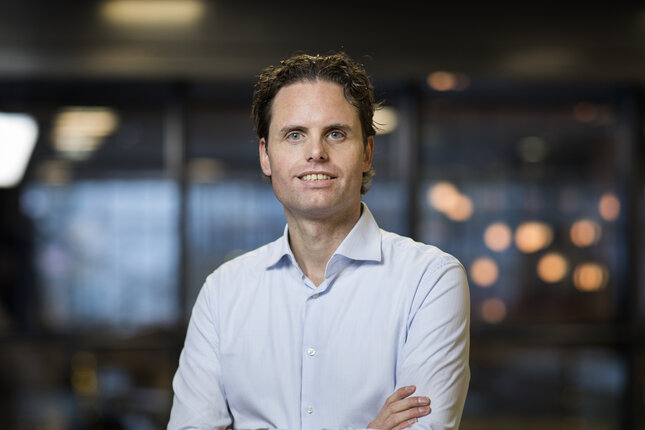Eindhoven University of Technology Scholars Rudie Kunnen, Ilja Voets, and Tom de Greef Awarded Prestigious NWO Vici Grants
In a first for TU/e and the highest number in thirteen years, three of our researchers have been awarded NWO Vici grants at the same time. For the researchers in question, receiving this prestigious grant is the crowning glory for their work. After all, the grant goes to researchers who have already earned their spurs in science. They are now being awarded a personal grant worth 1.5 million euros to continue their pioneering research work.
Ilja Voets, professor at the Department of Chemical Engineering & Chemistry and the TU/e institute ICMS, will use the grant to pursue research on ice formation and ice-binding materials. Within the Department of Applied Physics and Science Education, associate professor Rudie Kunnen plans to work on modeling vortexes in turbulent flows. And, researching the potential of DNA to function as a green and sustainable ‘device’ for data storage is the focus of the work of Tom de Greef, professor at the Department of Biomedical Engineering and ICMS.

Dancing on ice
Since her first encounter with antifreeze proteins, professor Ilja Voets has been fascinated by materials that can manipulate ice. In the future, such materials may be applied to preserve perishable foods or donor organs for life-saving treatments.
“The ability of ice-interactive materials to create and sculpt ice into small crystals with unusual shapes is unparalleled,” Voets explains. “We suspect that this is due to a unique interaction of these materials with ice.”
With her Vici grant, Voets will develop and use advanced imaging tools, such as super-resolution microscopy, to map out the material-ice interactions and unravel the mechanisms that govern these interactions. “With this new technology, we can visualize for the first time why certain material properties are important and others are not,” Voets continued.
“We will use this fundamental insight to develop a blueprint for the design of the next generation of ice-interactive materials that we can tailor to minimize freeze-thaw damage in diverse settings, such as frozen foods, porous materials, cell banking, and beyond.”

When does turbulence self-organize?
Turbulence is the uncontrolled and chaotic movement of air and water. An intriguing phenomenon for associate professor of Fluid Dynamics Rudie Kunnen. “For example, airplanes have to deal with turbulent air currents as they fly above us,” explains Kunnen. “But you also find turbulence in fast-flowing parts of a river with high gradient.”
At first glance, there seems to be no obvious structure to turbulence. But if the flow of air or water can be constrained somewhat, by using rotation for instance, then there is potential for the flow to transition and spontaneously organize itself by forming large structured vortices. Planetary atmospheres are prime examples of this.
“With this Vici grant, I want to model the large-scale natural flows where rotation is important, and predict when exactly this transition to vortex formation occurs,” says Kunnen. “For example, think about describing the motion of liquid metal in Earth’s outer core, which is the source of our planet’s magnetic field.”

DNA as the key to data storage
At the 2023 Dutch Design Week, professor Tom de Greef and his team outlined to Queen Maxima of the Netherlands that DNA can be an efficient and sustainable way to store enormous amounts of data. With his Vici grant, de Greef wants to push that research to new heights.
“DNA is very promising as a future, sustainable, and green storage medium or ‘device’ for archive data,” says De Greef. “In this project, the team and I will develop smart micromaterials and overarching technologies to improve the reading of data stored on DNA. In addition, this will also allow us to modify the stored data.”
De Greef: “With the developed technology, we are going to create a fundamentally new paradigm in DNA data storage. We will not only base this on our research, but I specifically want to integrate new conceptual and experimental developments from material science, robotic automation, micro-engineering, and the molecular processing of DNA.”

